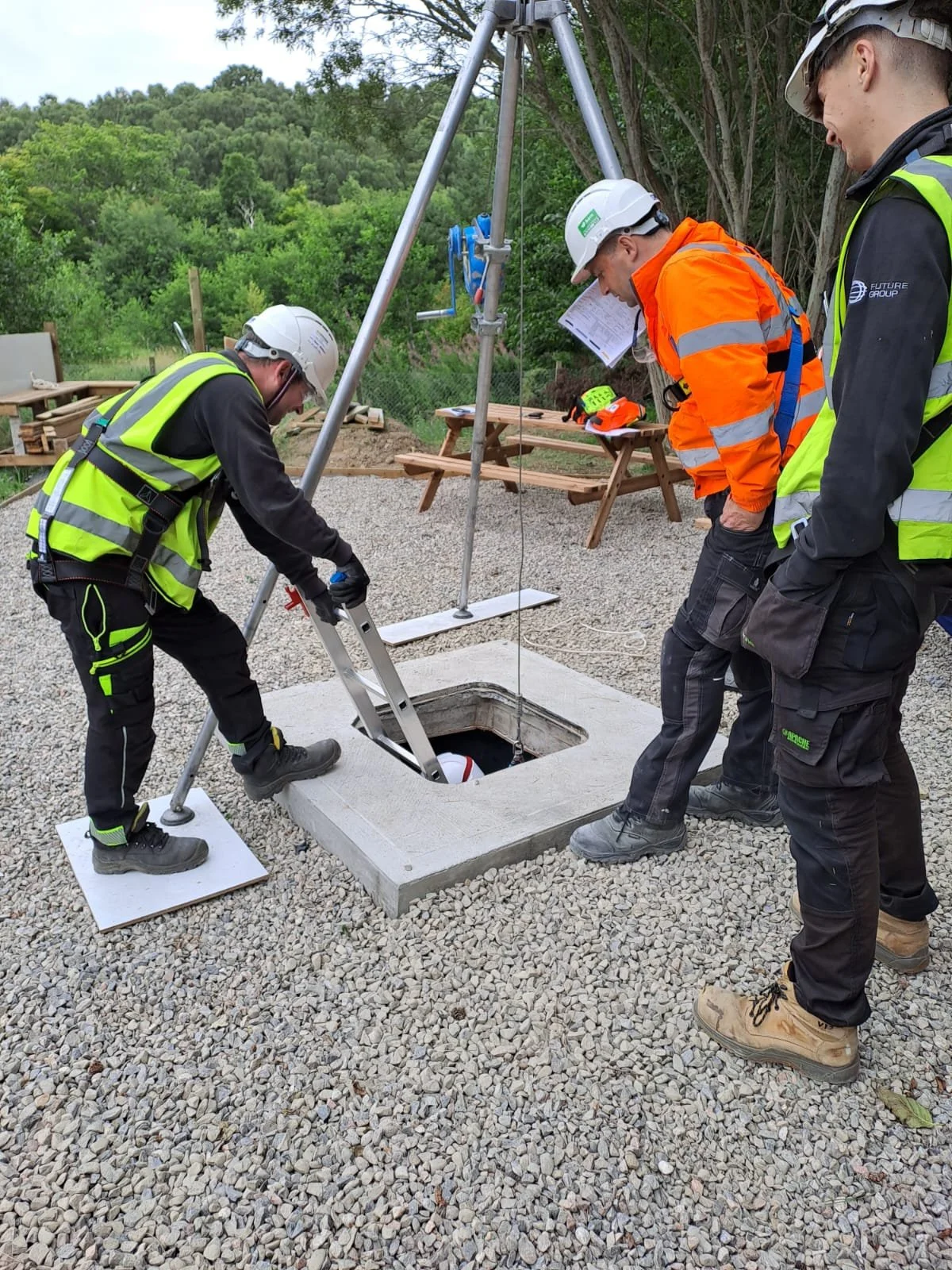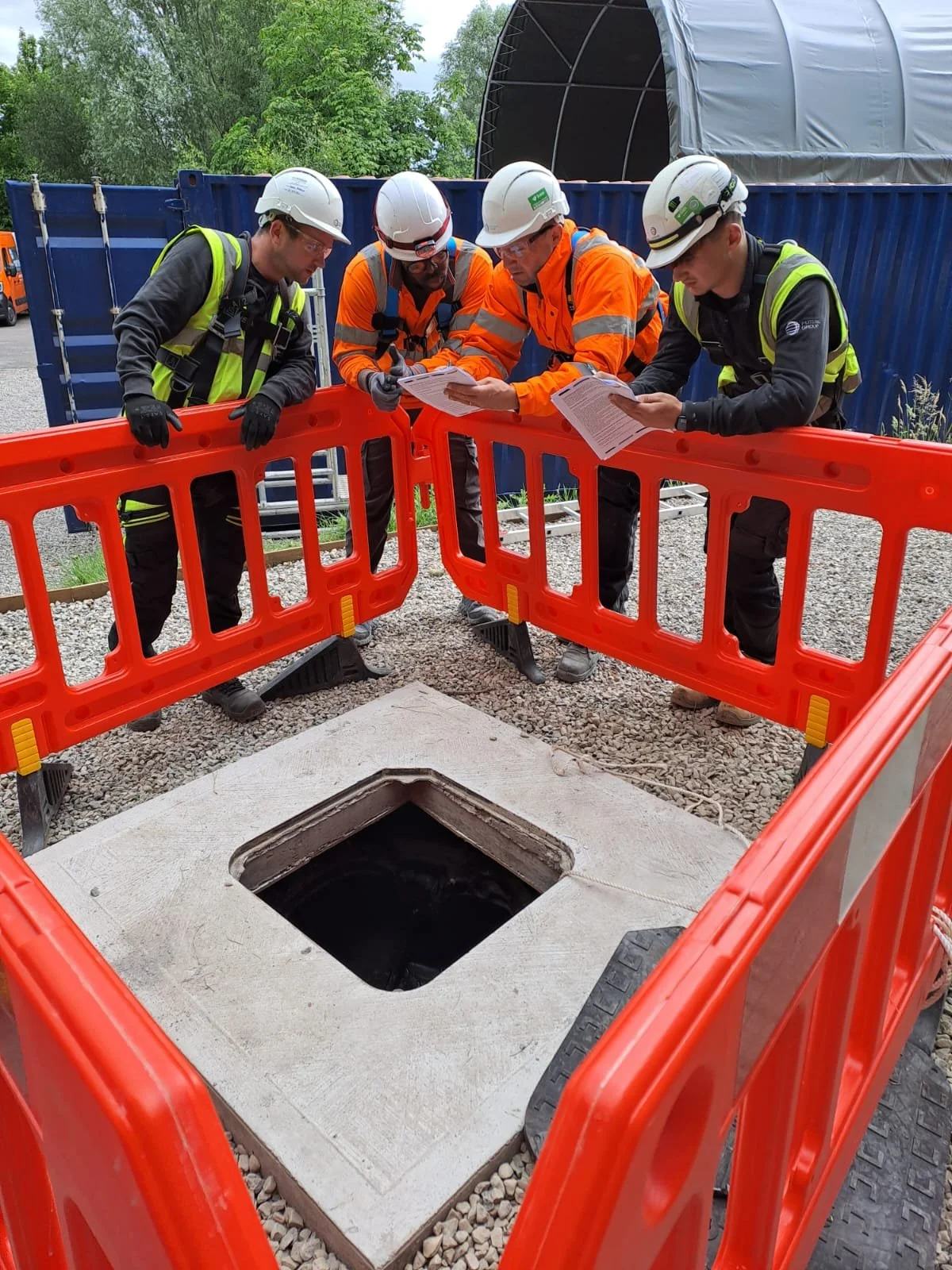Confined Space Training: What’s the Difference Between Low, Medium, and High Risk environments?
At ACT – Avery Cameron Training, we run monthly Confined Space Entry training at our Dingwall Centre near Inverness. There’s often confusion about the different risk environments and what that means for your training options. In this article, we’ll explain the differences in course content to help you choose the right training.
What is a ‘Confined Space’?
The HSE (Health & Safety Executive) defines a confined space as the following:
A confined space is enclosed or largely enclosed and has a reasonably foreseeable specified risk to workers of: fire, explosion, loss of consciousness, asphyxiation, drowning
It may be small and restrictive for the worker, or it could be far larger, such as a grain storage silo with hundreds of cubic metres capacity. Working in a confined space is dangerous because of the risks from noxious fumes, reduced oxygen levels, or the risk of fire. Other dangers may include flooding, drowning or asphyxiation from some other source such as dust, grain or other contaminant.
What does Confined Space Training involve?
At ACT – Avery Cameron Training, we offer Confined Space Entry courses designed to help you understand the procedures required for entering low, medium, and high-risk environments.
We run separate courses tailored to each risk level, including:
Which Confined Space Training is right for you?
We’ve put together a Confined Space Information table to help you discover what level you require. Here’s a quick overview of what the table states.
Low Risk – 1 Day Course
This one-day course covers the definition of a confined space and the relevant legislation governing confined space work. It includes an overview of the three risk categories—low, medium, and high—and explains the importance of having a rescue plan in place. Delegates will learn about the common hazards associated with confined spaces, how to interpret and review risk assessments, and how to apply control measures to establish a safe system of work.
The course also covers the use of permits and barriers to control entry, the operation of gas monitors, and appropriate responses to emergencies, including self-rescue techniques. The training concludes with a practical low-risk assessment and a written test to confirm understanding.
Medium Risk – 2 Day Course
This two-day course builds on the content of the Low Risk course and expands into the procedures and equipment required for medium risk confined space entry. It includes the use of tripods, self-retracting lanyards, and retrieval systems, as well as the selection and correct use of harnesses suitable for confined spaces.
Delegates will also cover effective communication methods, including the use of radios and maintaining line of sight. The course involves practical entry into medium-risk confined spaces, training in the use of escape sets, and concludes with both practical and written assessments to confirm competence.
High Risk – 3 Day Course
This three-day course incorporates all the content covered in the Low and Medium Risk courses, with additional training specific to high-risk environments. Delegates will learn to use breathing apparatus, including both self-contained units and line working, as required for entry into high-risk confined spaces.
The course places a strong emphasis on developing and following safe systems of work tailored to high-risk conditions. Delegates will take part in practical exercises simulating high-risk entries and will complete both practical and written assessments to demonstrate competence.
Still have questions?
Contact Alasdair to determine which confined space course is right for you. You can email him at alasdair@actsafe.uk or phone us at 01349793088. We’re here to help.
We run regular Confined Space Training at our Dingwall Training Centre, and we can also deliver the training on-site at your location. Our most frequently delivered course is Confined Space Entry (Low/Medium Risk), as it's the most relevant for the majority of working environments.
Explore our Confined Space Training options and book your course online.



